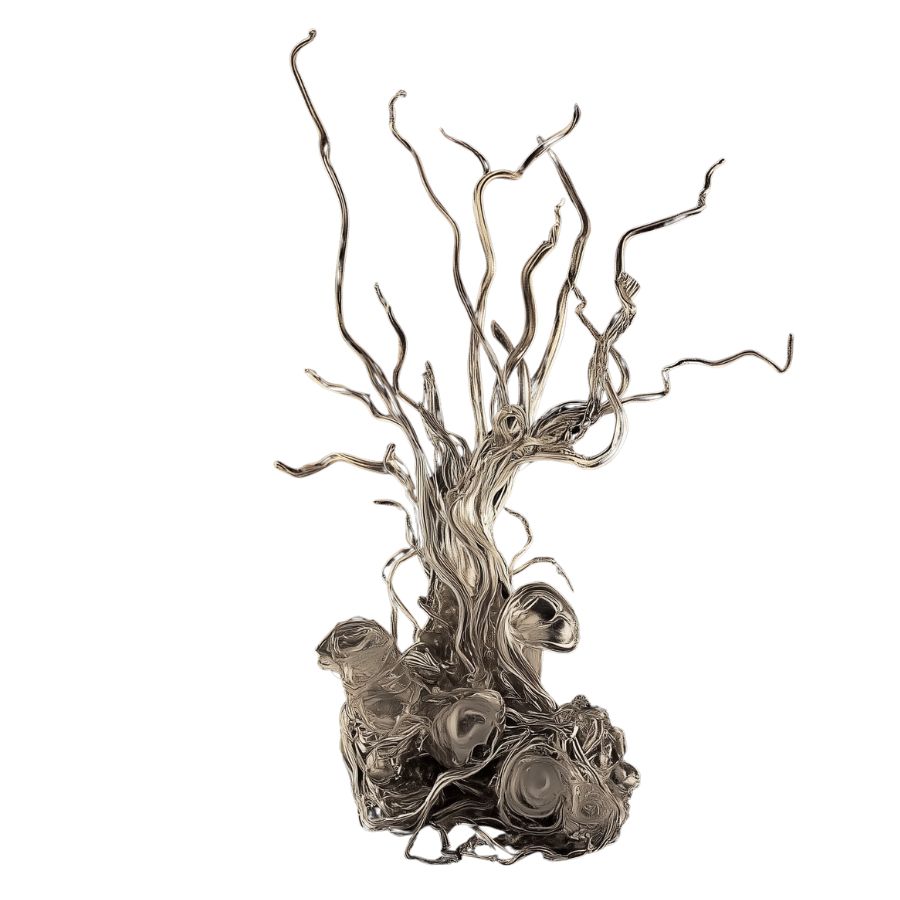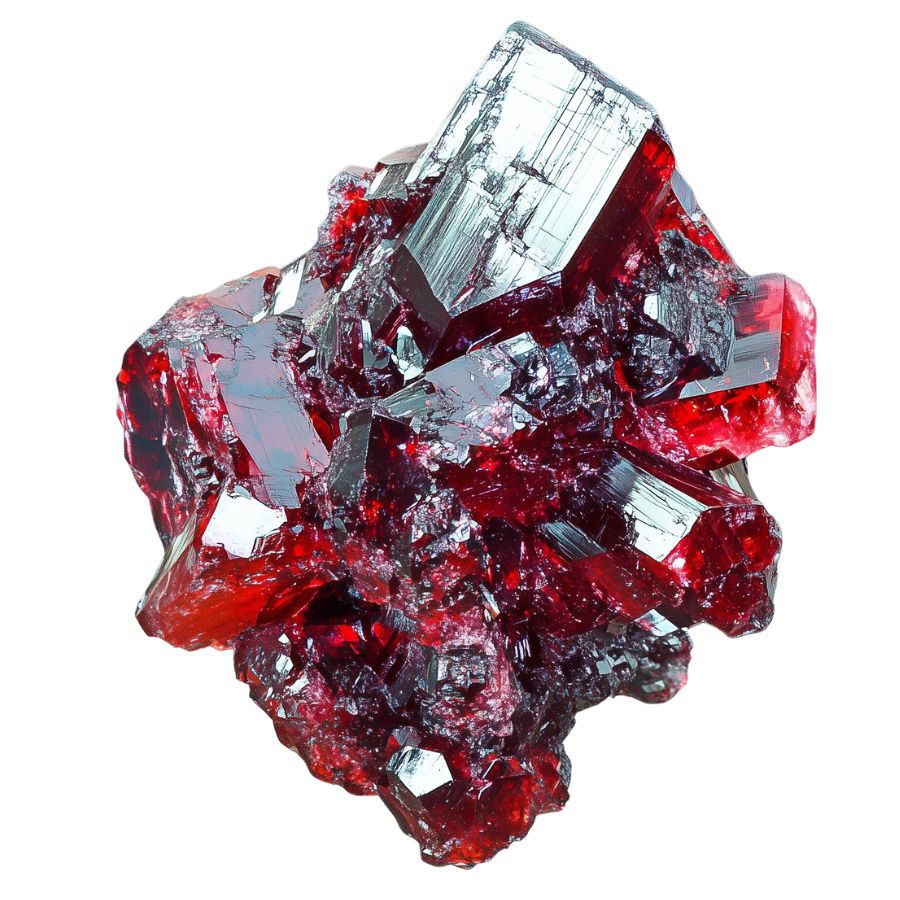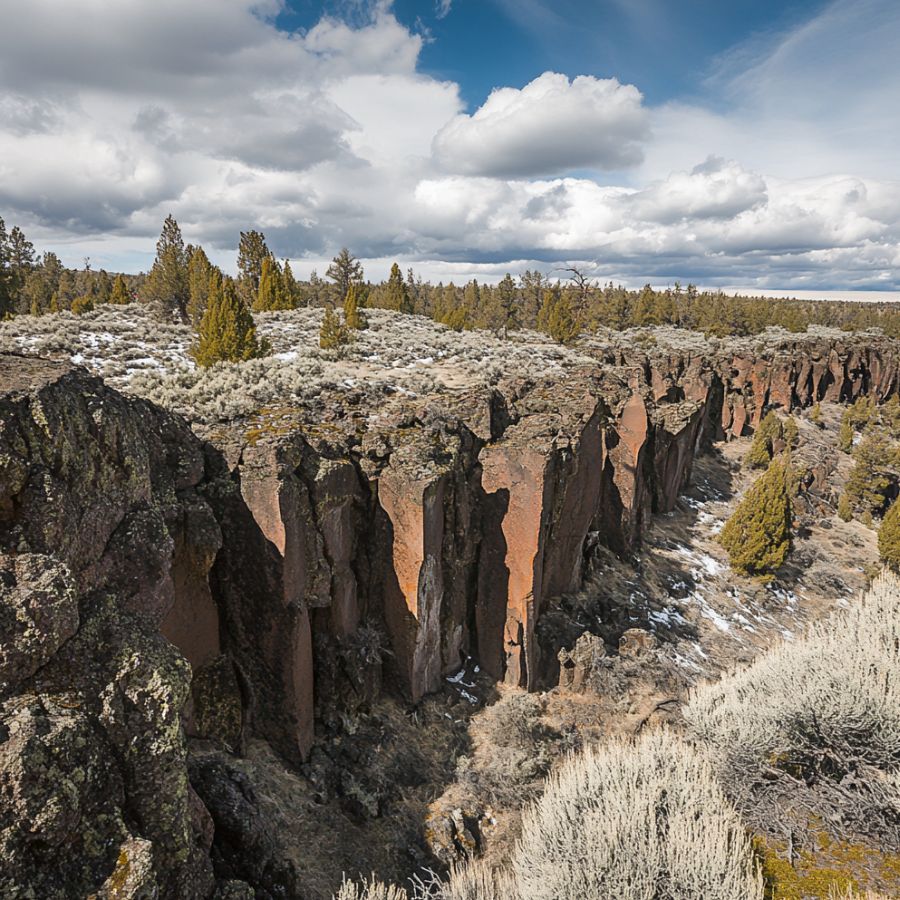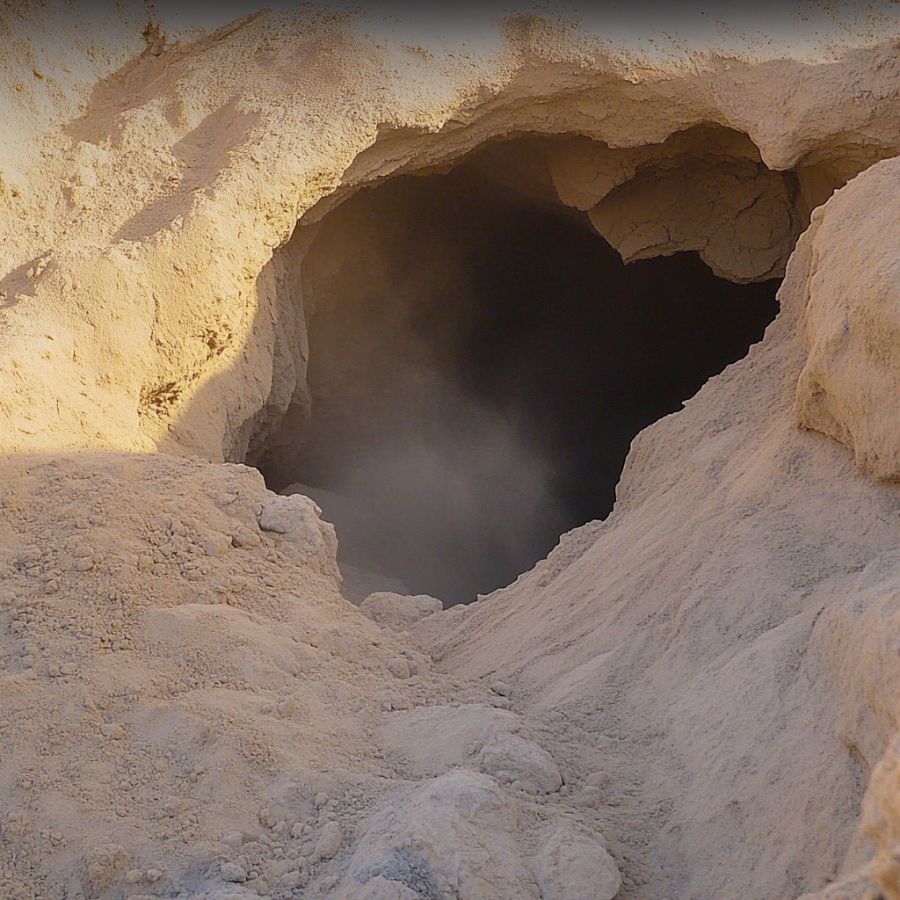Texas once produced over 1.8 million ounces of silver during its mining peak in the late 1800s. The historic Shafter Mine District alone contributed nearly $20 million worth of silver between 1883 and 1942.
Still, many rockhounds miss out on great silver locations because they focus only on well-known spots. Truth is, there are hidden gems scattered across the State that most collectors don’t know about.
We’ve seen countless enthusiasts waste weekends searching in picked-over areas while overlooking promising sites just a few miles away.
So, we’ve compiled the best silver-hunting spots in Texas for you. Our list includes both popular and lesser-known locations, carefully researched and verified with local geology experts and experienced rockhounds.
These sites will save you time and frustration, putting you right where you need to be to find that perfect silver specimen.
The only other thing you’ll want to bring is Rock Chasing’s Texas Rocks & Minerals Identification Field Guide, which makes identifying your finds simple and fast. It keeps you from walking past something valuable without realizing it and saves hours of guessing once you strike something shiny.
How Silver Forms Here

Silver forms when super-hot fluids, heated by magma deep underground, flow through cracks in rocks. These fluids, rich in minerals, carry dissolved silver along with other metals.
As these hot solutions cool down and move upward, they deposit silver in veins within the rock.
Often, silver combines with sulfur to create argentite, the most common silver ore. Sometimes, it mixes with other elements like chlorine or forms pure silver threads.
The process happens slowly, over millions of years, as these mineral-rich fluids repeatedly fill and crystallize in underground fractures. The best deposits usually form where there’s a lot of volcanic activity.
Types of Silver Found in the US
The US is home to many silver types, and our state boasts some noteworthy examples as well. Each type showcases its own unique beauty and intriguing characteristics, such as:
Native Silver Flakes

Native silver flakes display a stunning silvery-white color with a bright metallic shine. These thin, plate-like formations often show interesting branching patterns called dendritic structures.
The flakes can range from paper-thin to slightly thicker plates, each with its own unique pattern and formation.
These specimens are pure elemental silver, occurring naturally without combining with other elements. This purity gives them their characteristic bright, untarnished appearance when freshly exposed.
The formation process creates remarkable and intricate shapes resulting in each flake having a unique structure, some showing tree-like patterns while others form geometric shapes. The branching patterns are particularly fascinating, resembling miniature silver trees.
The flakes sometimes appear as overlapping layers, creating complex three-dimensional structures. These formations result from specific geological conditions where silver compounds were naturally reduced to pure silver.
Native silver flakes are highly sought after due to their purity and their unique structures. The more bizarre the formation—such as branching or twisted structures—the higher the value among collectors.
If you want REAL results finding incredible rocks and minerals in Texas you need one of these 👇👇👇
Finding the coolest rocks in Texas isn’t luck, it's knowing what to look for. Thousands of your fellow rock hunters are already carrying Rock Chasing field guides. Maybe it's time you joined the community.
Lightweight, mud-proof, and packed with clear photos, it’s become the go-to tool for anyone interested discovering what’s hidden under our red dirt.
Join them, and make your next rockhounding trip actually pay off.
📘 Order the Texas Field Guide Now →
What makes it different:
🚙 Field-tested across Texas rivers, ranchlands, and roadcuts.
📘 Heavy duty laminated pages resist dust, sweat, and water.
🧠 Zero fluff — just clear visuals and straight-to-the-point info.
📍 Find hidden gems like Blue Topaz, Texas agate, and petrified wood fast.
⭐ Rated 4.8★ by real collectors who actually use it in the field.
Native Silver Wires

Native silver wires present as delicate, hair-like strands that often curl and twist into fascinating formations. Fresh specimens show a brilliant silver color, though they may darken over time due to natural tarnishing.
The purity of these wires is remarkable, often exceeding 99.7% silver. Their structure shows unique growth patterns, with individual strands that can be incredibly long compared to their width. Some specimens show length-to-width ratios greater than 20, creating impressive specimens.
The internal structure of these wires reveals interesting features called twins – areas where the crystal structure changes direction.
This twinning creates unique patterns visible under magnification and contributes to the wire’s ability to bend and twist into various shapes.
These specimens often maintain their shape despite their delicate appearance. The natural formation process creates stronger structures than you might expect from such thin strands.
Galena

Galena showcases a striking lead-gray color with a brilliant metallic shine when freshly exposed. Its surface can develop a duller appearance over time, creating an interesting aging effect.
The crystal structure forms perfect cubes and eight-sided shapes called octahedra, making it easily recognizable.
One of the most fascinating aspects of galena is its weight. It feels surprisingly heavy in hand compared to other minerals of similar size. This high density comes from its rich lead content, which also makes it the primary source of lead worldwide.
Galena played a crucial role in early wireless communication. Its natural semiconductor properties made it an essential component in crystal radio receivers.
Ancient civilizations recognized its value as early as 3000 BC, using it for various metallurgical purposes.
SAFETY WARNING: Handling Galena requires extreme caution. It has high lead content that makes it toxic if ingested or inhaled. Always wash hands after handling, wear gloves, and never lick or taste the mineral.
Chlorargyrite

Chlorargyrite displays an intriguing pearly gray to brown color, often forming cube-shaped crystals. Its surface shows a unique silky to resinous shine, setting it apart visually. The mineral frequently appears as crusts or coatings, creating interesting surface patterns.
Perhaps the most captivating feature of chlorargyrite is its response to light. When exposed to sunlight, it undergoes a remarkable transformation, changing color to various shades of gray or purple. This happens as the mineral breaks down into pure silver, demonstrating a fascinating natural process.
The formation of chlorargyrite involves an interesting geological process called supergene enrichment. This occurs when metals dissolve from their original minerals and concentrate in new locations, creating pure deposits of chlorargyrite.
This mineral’s light sensitivity made it valuable in the early days of photography. Before modern photographic techniques, chlorargyrite’s natural properties helped capture some of the first photographs, marking a significant milestone in technological history.
Electrum

Electrum presents a fascinating range of colors from pale to bright yellow, depending on its gold and silver content. Its metallic surface shows a softer gleam than pure gold, which earned it the historical nickname “white gold” in ancient times.
The composition of electrum varies significantly, containing anywhere from 20% to 80% gold, with silver making up the remainder. This natural variation creates unique pieces with distinct appearances and properties.
This metal alloy holds a special place in economic history as the material used for the world’s first coins. Around 625-600 BC, the kingdom of Lydia began minting electrum coins, revolutionizing trade and commerce in the ancient world.
The name “electrum” comes from the Greek word for amber, reflecting its pale golden color. Ancient texts, including Homer’s Odyssey, mention this precious metal alloy, highlighting its importance in classical civilization.
Acanthite

Acanthite presents as dark gray to black crystals with a distinctive metallic shine. These crystals often form elongated prisms or tubes, and sometimes appear in pseudo-cubic shapes.
An interesting feature of acanthite is its ability to change form at different temperatures. Above 173°C, it transforms into a different crystal structure called argentite. This transformation can create unique patterns and shapes in the specimens.
The crystals often group together in complex arrangements, forming branching or tree-like structures. These intricate formations make each specimen unique and visually striking.
Acanthite is considered one of the most important silver ores, second only to argentiferous galena. Its high silver content makes it particularly valuable for collectors and rockhounds.
Proustite


Proustite displays a stunning deep red to scarlet color that immediately catches the eye. Its crystal formations range from delicate prisms to rhombohedral shapes, sometimes reaching up to 8 centimeters in size. The surface shows a glass-like shine that gives specimens an extra touch of beauty.
Its specific gravity ranges from 5.57 to 5.64, indicating a high density due to its silver content.
An interesting feature of proustite is its reaction to light. When exposed to sunlight for extended periods, the bright red color gradually darkens and becomes opaque. This sensitivity makes proper storage essential for maintaining the specimen’s original beauty.
The crystals often form in complex groups, creating striking visual displays. Each crystal can show different faces and angles, making every specimen unique.
Some pieces show perfect crystal formations, while others appear in massive or granular clusters.
SAFETY WARNING: Proustite contains arsenic and should be handled with caution. Always wash hands after handling, avoid creating dust, and never lick or taste specimens.
Sphalerite

Sphalerite comes in an impressive range of colors, from yellow and brown to black and even colorless. This variety in color makes each piece unique.
Sphalerite typically crystallizes in a cubic system, appearing as dodecahedral or tetrahedral crystals, though massive forms are more common.
One of the most fascinating features of sphalerite is its ability to produce light. When scratched or broken in the dark, it creates a brief flash of light – a phenomenon called triboluminescence.
It also glows under ultraviolet light, showing yellow-orange or blue colors depending on its composition.
The crystal surfaces have a distinct shine that can range from diamond-like to resinous. Pure specimens might be transparent, while others are completely opaque. The way light plays off these surfaces can create beautiful effects.
Some specimens show color zoning, where different shades appear in bands or patches within the same crystal. These patterns form naturally during the crystal’s growth and add to its visual appeal.
Pyrite with Trace Silver

Pyrite shines with a bright, brassy-yellow color that earned it the nickname “fool’s gold.” The crystals form perfect cubes, eight-sided shapes, or combinations of both. The surface gleams with a metallic brightness that stays brilliant even after long exposure.
Pyrite has a hardness rating of 6–6.5 on the Mohs scale, making it relatively durable compared to other minerals. It is also non-magnetic and does not fluoresce under ultraviolet light, which are useful characteristics for identification.
Many specimens show striations – fine parallel lines on the crystal faces. These natural markings are like nature’s fingerprints, making each piece distinct.
The surfaces can also develop an iridescent tarnish that adds rainbow colors to the golden shine.
Pyrite has been used historically for various applications, including as a source of sulfur for sulfuric acid production. Its ability to emit sparks when struck against metal made it valuable in fire-starting tools before modern ignitions were developed.
Pyrargyrite

Pyrargyrite shows a beautiful deep red-to-red-gray color that resembles fine ruby. When you look at it closely, you can see its brilliant shine that ranges from glass-like to metallic. The crystals often form in striking prismatic shapes with natural lined patterns on their surfaces.
One fascinating aspect is how the color changes when you move the stone around in light. The deep red can shift to darker tones, creating an interesting play of color.
When scratched, it leaves a distinctive purplish-red mark, which helps identify genuine specimens.
The crystals can form in various ways, from single prisms to complex groups. Sometimes they create star-like patterns or clusters that catch light from multiple angles. These formations make each piece unique and visually striking.
SAFETY WARNING: Pyrargyrite contains antimony, which can be toxic. Always handle with care, avoid creating dust, and wash hands after touching specimens. Keep away from children and store in well-ventilated areas.
Polybasite

Polybasite appears black at first glance but holds a surprising secret. When held up to strong light, it reveals beautiful dark ruby-red reflections from within. These internal flashes of color make each specimen special and exciting to examine.
The crystals typically form thin, plate-like shapes that sometimes group together in rose-like patterns. This distinctive growth pattern creates interesting layers that catch light differently from various angles.
An interesting feature of polybasite is its ability to form two different crystal structures – trigonal and monoclinic. This dual nature isn’t common in minerals and makes each piece potentially unique in its formation.
Freieslebenite

Freieslebenite displays a pale steel-gray to silver-white color with a bright metallic shine. The crystals often show clear striped patterns along their length, making them easily recognizable.
It is named after Johann Carl Freiesleben, a notable mining commissioner—which adds to its allure among enthusiasts who appreciate the stories behind mineral discoveries.
The crystals frequently form as long, prismatic shapes. They sometimes appear alone, but often grow together in groups that create striking geometric patterns. The surface shine stays consistent even as you turn the specimen in different directions.
The mineral often contains small inclusions of other minerals, which can create interesting patterns within the crystals. These natural imperfections add character to each specimen and make every piece unique.
SAFETY WARNING: Freieslebenite contains lead and antimony, making it potentially hazardous. Always handle with care, avoid creating dust, and wash hands thoroughly after handling. Keep specimens in sealed containers and away from children.
What Rough Silver Looks Like
Identifying a rough silver might seem tricky, but with a few tips, you can spot one even if you’re not a rock expert. We’re going to give you some great tips now.
Real quick before we jump into that we wanted to cover rock and mineral identification in general.
Look for the Distinct Metallic Sheen

Raw silver typically shows a bright, metallic luster which is a whiter, more platinum-like shine. When tarnished, it’ll have dark gray or blackish patches.
Fresh surfaces exposed by scratching will reveal that characteristic silvery-white color.
Pro tip: Use your phone’s flashlight to check how light reflects off the surface – genuine silver will maintain its whitish gleam even under bright light.
Check the Malleability with a Gentle Scratch

Got a copper penny? Try scratching the stone gently. Silver’s pretty soft (2.5-3 on the Mohs scale) and will actually leave a silvery streak.
If it’s super hard or leaves a dark streak, you’re probably looking at something else. The surface might show some natural indentations or marks because of silver’s softness.
Examine the Surface Texture

Real silver ore often appears in thread-like or wire-like formations. Sometimes you’ll spot cube-shaped or octahedral crystals.
The surface usually isn’t smooth – expect a somewhat dendritic (tree-like) or reticulated pattern. Run your finger across it; authentic silver ore feels surprisingly heavy for its size and slightly greasy to the touch.
Test the Temperature Conductivity

Here’s a cool trick: hold the stone in your palm for 30 seconds. Silver’s an excellent conductor, so it’ll quickly warm up to your body temperature. If it stays cold longer, it might be another mineral.
Also, check if water droplets spread out quickly on the surface – silver’s high conductivity causes this distinctive behavior.
The Tools You Will Need

Silver hunting isn’t about having the biggest or most expensive gear. The best finds often come from those who know how to use a few simple tools well. With the right basics, anyone can start exploring Texas terrain and spot valuable material hiding in plain sight.
A Great Field Identification Guide – Essential
A good field guide makes every trip smoother. It helps you recognize silver and the minerals often found near it, understand the different rock types in each region, and avoid wasting time on lookalikes. It’s like traveling with a local expert that never gets tired or second-guesses what you’ve found.
Rock Chasing’s Texas Rocks & Minerals Identification Field Guide is built for the field. It’s waterproof, easy to carry, and full of clear photos of more than 120 Texas specimens.
You’ll save hours of uncertainty and avoid walking past something valuable without realizing it.
Find out HERE why it’s become a must-have for Texas rockhounds.
Rock Hammer and Chisel – Essential
Silver often occurs inside hard rock, and breaking open those layers safely takes the right tools. A hammer gives you power, while a chisel lets you control each strike to avoid damaging the rock around your find. Together, they’re the go-to pair for anyone serious about revealing what’s hidden inside solid stone.
Field Gloves – Recommended
Rocks can be sharp, and silver-bearing areas often have jagged edges or loose debris. Gloves protect your hands from cuts and scrapes while improving grip when working with tools. They make long hours in the field far more comfortable and safe.
Hand Lens – Recommended
A small hand lens helps you inspect rock surfaces and spot silver-bearing minerals that might be too small to see clearly. With a quick look through the lens, you can tell whether that dull patch is just discoloration or the beginning of a metallic vein. It’s lightweight, affordable, and surprisingly useful.
Small Brush and Water Bottle – Optional
Sometimes the difference between dull rock and visible silver is a thin layer of dirt. A quick spray and gentle brushing can bring out metallic shine or crystal structure right away. It’s a simple trick that makes identifying silver in the field a lot easier.
Tips on Where to Look
Once you get to the places we have listed below there are some things you should keep in mind when you’re searching:
Rocky Cliffs and Outcrops

Start by looking at exposed rock faces, especially those with white or gray quartz veins running through them. Silver often hides in these veins alongside other shiny minerals.
The surrounding rock might have a rusty red or dark gray color. Bring a rock hammer and safety glasses, and carefully check any chunks of rock that feel unusually heavy for their size.
Creek Bottoms

Get yourself a gold pan and head to creeks near old mining areas. Look for places where the water slows down – like behind big rocks or at sharp bends.
Silver is heavy, so it settles in the same spots where you might find black sand. Focus on the bottom layer of sand and gravel when panning. The silver will often appear as small, shiny flakes or nuggets.
Old Mine Areas

Search through rock piles near historic mining sites (with permission). Miners often missed smaller pieces of silver-bearing rock.
Look for rocks with a gray metallic shine or those that are surprisingly heavy. A UV light can help, as some silver minerals glow under ultraviolet light.
Always wear sturdy boots and watch for unstable ground.
Rock Cracks and Caves

Silver deposits often form in cracks and small caves where mineral-rich water once flowed. Look for areas where different types of rock meet, especially where light-colored granite touches darker rock.
These contact zones are prime spots for silver deposits. Bring a flashlight and look for metallic streaks or patches on the walls.
Mountain Stream Banks

Check eroded stream banks in mountainous areas, especially after heavy rains. Silver-bearing rocks often wash out of higher ground and collect along stream edges.
Look for unusually heavy pieces with a metallic luster. The best spots are usually where the stream makes a sharp turn or where several smaller streams come together. Dig a few inches into the gravel at these points.
Some Great Places To Start
Here are some of the better places to start looking for silver in Texas:
Always Confirm Access and Collection Rules!
Before heading out to any of the locations on our list you need to confirm access requirements and collection rules for both public and private locations directly with the location. We haven’t personally verified every location and the access requirements and collection rules often change without notice.
Many of the locations we mention will not allow collecting but are still great places for those who love to find beautiful rocks and minerals in the wild without keeping them. We also can’t guarantee you will find anything in these locations since they are constantly changing.
Always get updated information directly from the source ahead of time to ensure responsible rockhounding. If you want even more current options it’s always a good idea to contact local rock and mineral clubs and groups
Shafter Area

Shafter is a ghost town located in Presidio County, Texas, in the southwestern part of the state. It is situated on Cibolo Creek, approximately 18 miles north of Presidio and 43 miles south of Marfa.
This historic area was once one of Texas’s most productive silver regions, producing over 30 million ounces of silver between 1883 and 1942.
The district’s geology features Permian limestone formations intersected by mineral-rich intrusive bodies. These geological structures created ideal conditions for silver mineralization, particularly in the form of silver-bearing galena.
The La Mina Grande, the district’s largest mine, reached depths of over 900 feet. While most commercial mining has ceased, the area still contains significant silver deposits.
Rockhounds can explore the mine dumps and outcrops around Cibolo Creek, where pieces of silver-bearing ore can still be found. The weathered limestone areas near old mine workings often yield samples of galena and other silver minerals.
You've probably walked past some incredible rocks and minerals. You need this guide 👇👇👇
We've all come across a cool rock that we could have sworn was rare or valuable but couldn't tell what it was.
If you're not 100% confident that you know every rock and mineral in Texas this guide is for you.
The Texas Rocks & Minerals Field Guide helps you ID what you find in seconds, from Hill Country agates to Llano granite, with crisp photos, simple charts, and zero fluff.
→ Grab your copy today and spot your next gem before anyone else does.
What this guide unlocks:
🧭 Confidence in the field — ID rocks fast and move on to the next find
🎒 Lightweight and waterproof — built for trails, not coffee tables
🌅 Weekend adventures — find treasures on rivers, ranches, and roadsides
🤠 Texas pride — explore the real geological beauty of your state
🔥 Motivation — every trip outside feels like a hunt for hidden gems
Loma Plata Mine

The Loma Plata Mine is located near the town of Candelaria, Texas, within the Loma Plata Mining District. This mining site is situated in the southwestern part of the state. The mine operated from 1947 to 1949 and is currently closed.
The mine’s rich deposits formed through unique geological processes involving igneous and metamorphic rock formations. Silver-bearing galena ore is abundant here, making it one of Texas’s most significant silver locations.
The surrounding area features multiple inactive mining camps that tell the story of the region’s mining boom.
The main mining zone contains several prospecting areas, with the Big Mine and Silver Dome Mountain prospect being particularly noteworthy. These sites still show evidence of the extensive silver mineralization that drew miners here decades ago.
The mine’s high-grade silver deposits once yielded impressive amounts of silver, and the surrounding rock formations still hold potential for mineral enthusiasts interested in the area’s geological heritage.
Badu Hill

Badu Hill stands in Llano County, Texas, about 4 miles northwest of Buchanan Dam. This prominent geological feature is part of the ancient Llano Uplift region, formed over a billion years ago.
The hill’s core contains rich veins of microcline feldspar and valuable minerals embedded in igneous and metamorphic rocks. These formations date back to the Mesoproterozoic era, creating ideal conditions for silver mineralization.
The most productive areas for finding silver are near the old Badu Hill Mine workings, particularly in the quartz and feldspar outcrops. The surrounding area also contains several smaller prospects where silver has been found.
The hill’s exposed rock faces and weathered surfaces often reveal metallic traces, making surface collecting possible.
Walnut Creek

Walnut Creek is a tributary stream of the Colorado River in Central Texas. It flows from north to south, crossing the Edwards Plateau on the western side of Austin and down to the Blackland Prairie on the eastern side of the city.
The creek’s watershed, spanning 36,000 acres, contains rich alluvial deposits where silver particles have been discovered. These deposits formed over millions of years as minerals washed down from the Edwards Plateau.
Walnut Creek Metropolitan Park offers some of the most productive areas for silver prospecting. The park’s northern section, where the creek cuts through limestone ledges, creates natural sluices that trap heavier minerals.
Prospectors have had success searching the creek bends where water velocity changes deposit mineral-rich sediments.
Quitman Mountains

The Quitman Mountains stretch across Hudspeth County in western Texas, starting seven miles west of Sierra Blanca and running twenty-four miles southeast. This rugged mountain range reaches heights of 6,589 feet and holds a rich mining history dating back to the late 1800s.
The mountains contain valuable silver deposits within silver-bearing galena ore, primarily concentrated around the historic Bonanza Mine area. The geology features a mix of igneous and metamorphic rocks, creating ideal conditions for silver mineralization.
The range’s formation during the Late Cretaceous period contributed to its mineral-rich composition.
Silver prospectors often focus their searches around old mining sites in Silver King Canyon, where the terrain’s unique characteristics make it promising for discoveries. The mountain’s shallow stony soils and exposed rock formations make it easier to spot mineral veins and deposits.
Places Silver has been found by county
After discussing our top picks, we wanted to discuss the other places on our list. Below is a list of the additional locations where we have succeeded, along with a breakdown of each place by county.
| County | Location |
| Brewster | Altuda Mountain District |
| Brewster | Mariposa Mine |
| Brewster | Terlingua Mining District |
| Culberson | Hazel Mine |
| Culberson | Maltby Mine |
| EL PASO | Old Hazel Mine |
| Hudspeth | Black Hill Mine |
| Hudspeth | Silver Eagle Mine |
| Hudspeth | Snowline Canyon prospects |




